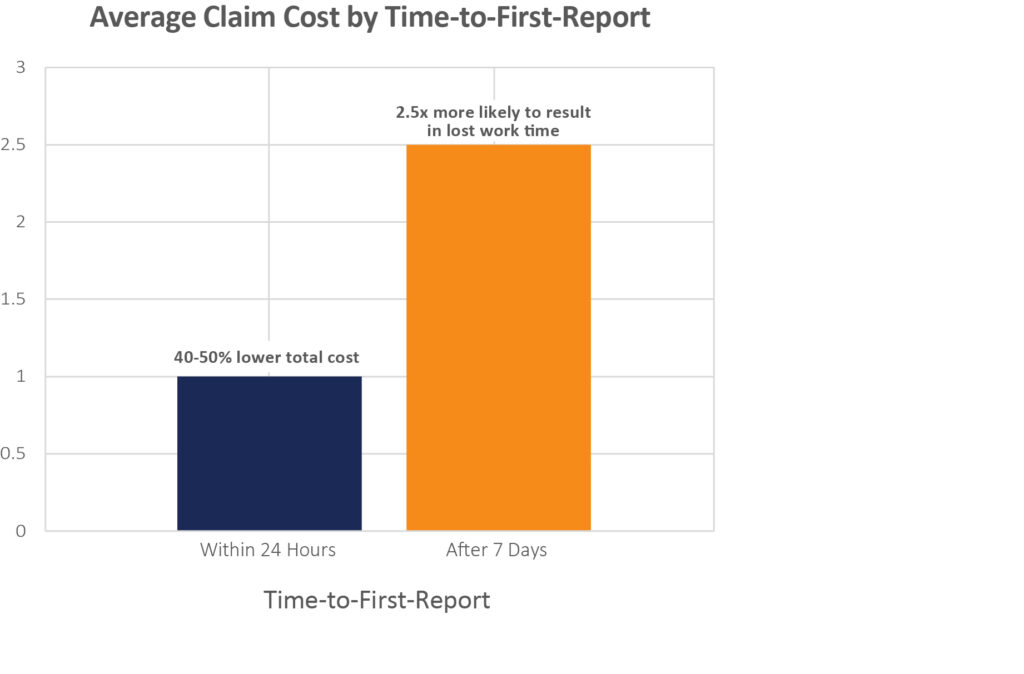Telehealth Triage: How, When and Why It Can Support Occupational Health
October 28, 2025 | Injury Care
Telehealth triage brings speed and clarity to workplace injuries. Learn how it improves outcomes, saves costs, and strengthens occupational health programs across industries.
Why Telehealth Triage Matters
When an employee is injured or feels unwell at work, time matters. Telehealth triage gives organizations immediate access to licensed occupational clinicians — anytime, anywhere. Instead of waiting for a clinic visit or navigating emergency care unnecessarily, employees can receive real-time guidance on what to do next.
At WorkCare, our 24/7 telehealth triage line gives employees immediate access to licensed occupational health physicians and nurses across the U.S. We believe that providing immediate access to the right care, at the right time and in the right setting is critical to injury care.
Timely intervention is not just a convenience; it’s a proven advantage. The American Academy of Actuaries reports that telehealth programs can shorten time-to-treatment, improve outcomes, and reduce the average duration of return-to-work cases.

[Sources: NCCI Research Brief, updated analysis; corroborated by The Hartford Risk Engineering and WCRI CompScope studies.]
In an era when speed, accessibility, and compliance all matter, telehealth triage has become a cornerstone of effective occupational health management.By delivering fast, expert assessment and guidance, telehealth triage helps reduce OSHA-recordable cases, minimize lost time, and strengthen workforce health outcomes.
When to Use Telehealth in Occupational Health
Telehealth is a practical tool for keeping employees healthy, safe, and productive. Employers typically use it for:
- Injury or symptom triage: When an incident occurs and the severity isn’t yet clear
- Early intervention: To address sprains, strains, or discomfort before they worsen
- After-hours access: When on-site clinics or local providers are closed
- Remote or field locations: To support teams working in isolated or temporary environments
Integrating telehealth into occupational programs improves both care access and data continuity — especially in geographically dispersed workforces.
What Is Telehealth Triage in Occupational Health?
Telehealth triage combines medical expertise with secure digital communication to determine the right level of care for a work-related injury or illness. It serves as the first point of contact in WorkCare’s 24/7 occupational health ecosystem.
Occupational Health: Telehealth Services Workflow
1. Incident occurs: An employee reports pain, discomfort, or injury.
2. Immediate connection: A nurse or clinician connects with the employee via a secure telehealth platform.
3. Assessment: Symptoms and mechanisms of injury are reviewed; red flags are identified.
4. Next steps: The clinician determines whether self-care, clinic referral, or emergency care is appropriate.
5. Documentation: Findings are logged for compliance, OSHA recordkeeping, and follow-up.
6. Case management: If the care continues, the employee remains supported through follow-up calls or on-site visits to facilitate an appropriate return-to-work plan.
This streamlined process ensures timely care decisions and continuity across on-site, clinic, and virtual environments — key principles endorsed by OSHA’s Recordkeeping Standard (29 CFR 1904. [Source: OSHA Recordkeeping Requirements]
Benefits of Telehealth Triage
1. Early Intervention
Prompt evaluation helps reduce the risk of minor issues from becoming costly claims.
2. Reduced Recordables and Lost Time
Employees often remain at work or return sooner, supported by WorkCare’s case management team.
3. Cost Efficiency
Avoids unnecessary emergency room visits and workers’ compensation escalations.
4. Consistency and Compliance
Telehealth protocols ensure uniform clinical decision-making and OSHA-aligned documentation.
5. Accessibility Across Shifts and Locations
Round-the-clock access supports multi-shift, high-risk, and geographically dispersed teams.
[Source: WorkCare Injury Care: Benefits for Employers and Employees]
Learn how WorkCare’s Injury Care and Incident Prevention programs integrate these benefits across industries.
Limitations and Considerations
While telehealth triage offers tremendous value, it’s not a replacement for every medical encounter.
- In-person exams are still required for imaging, physical testing, or severe injuries.
- Connectivity challenges may limit use in certain field environments.
- Regulatory environments vary across states for virtual clinical services.
WorkCare addresses these challenges through hybrid models combining on-site medical professionals, remote triage teams, and comprehensive case management to ensure no gap in care.
When Not to Use Telehealth Triage
- Life-threatening emergencies (e.g., chest pain, severe bleeding, loss of consciousness)
- Complex injuries requiring imaging or specialized diagnostics
- Regulated DOT medical exams or drug/alcohol testing (which require in-person evaluation)
For these situations, WorkCare’s on-site medical clinics or networked urgent-care partners provide direct support.
Explore WorkCare’s On-Site Clinical Services to learn more about how we provide on-site care for thousands of employees across the globe.
FAQs About Telehealth Triage
Q: How fast can employees reach a clinician?
A: Within minutes. WorkCare’s telehealth triage is available 24/7 for immediate response.
Q: Who provides the telehealth triage service?
A: Some organizations only provide telehealth access to occupational health nurses. At WorkCare, our telehealth triage line is staffed by a team of nurses and physicians trained in workplace injury protocols.
Q: Can telehealth triage replace an on-site clinic?
A: It complements — not replaces — on-site services. Many clients use both for full coverage.
Q: How are records handled?
A: All documentation complies with HIPAA and occupational recordkeeping standards.
Final Takeaway
Telehealth triage in occupational health bridges the gap between incident and recovery. It delivers the right care at the right time in the right setting — helping to improve outcomes, reduce costs, and reinforce compliance.
WorkCare’s integrated telehealth platform is designed to support every step, from injury care to case closure.
Schedule a consultation with WorkCare to see how telehealth triage can enhance your workforce health strategy.
Stay connected and get the latest updates from WorkCare
Let’s Work Together
Ready to take your workforce health and safety to the next level?
Contact us today to learn how WorkCare can partner with you to create a healthier, safer, and more productive workplace.
